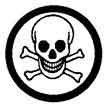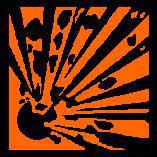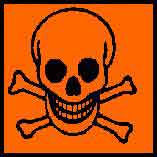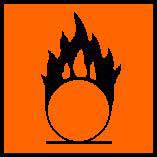
Untitled

Material Safety Data Sheet
Hazard Alert Code
Section 1 - CHEMICAL PRODUCT AND COMPANY IDENTIFICATION
PRODUCT NAME
STATEMENT OF HAZARDOUS NATURE
CONSIDERED A HAZARDOUS SUBSTANCE ACCORDING TO OSHA 29 CFR 1910.1200.
Company: Santa Cruz Biotechnology, Inc.
Address:2145 Delaware Ave
Santa Cruz, CA 95060
Telephone: 800.457.3801 or 831.457.3800Emergency Tel: CHEMWATCH: From within the US and
Canada: 877-715-9305Emergency Tel: From outside the US and Canada: +800 2436
2255 (1-800-CHEMCALL) or cal +613 9573 3112
PRODUCT USE
A long-acting tricyclic antihistamine for the treatment of al ergic rhinitis. Given by mouth. Non-sedating type histamine H1-
6]cycloh", "epta[1, 2-b]pyridin-", 11-ylidene)-1-piperidinecarboxylate, 11-ylidene)-1-piperidinecarboxylate, "4-(8-chloro-5, 6-
dihydro-11H-benzo[5, 6]cyclohepta[1", "4-(8-chloro-5, 6-dihydro-11H-benzo[5, 6]cyclohepta[1", ", 2-b]pyridin-11-ylidene)-", ",
2-b]pyridin-11-ylidene)-", "1-piperidinecarboxylic acid ethyl ester", "1-piperidinecarboxylic acid ethyl ester", 11-[N-
"[5, 6]cyclohepta[1, 2-b]pyridine", Sch-29851, Claritine, Clarityn, Lisino, "loratidine (sic)", antihistamine, Allereze
Section 2 - HAZARDS IDENTIFICATION
CANADIAN WHMIS SYMBOLS
Toxic to aquatic organisms, may cause long-term adverse effects in the aquatic environment.
POTENTIAL HEALTH EFFECTS
ACUTE HEALTH EFFECTS

SWALLOWED
■ Accidental ingestion of the material may be damaging to the health of the individual.
■ Adverse effects fol owing treatment with loratadine include headache, somnolence, fatigue and dry mouth. Other effects
include altered lachrymation, altered salivation, flushing, hypoaesthesia, impotence, increased sweating, thirst, angioneurotic
oedema,asthenia, back pain, blurred vision, chest pain, earache, eye pain, fever, leg cramps, malaise, rigors, tinnitus, viral
infections, weight gain, hypertension, hypotension, palpitations, supraventricular tachyarrhythmias, syncope, blepharospasm,
dizziness, dysphoria, hypertonia, migraine, paraesthesia, tremors, vertigo, altered taste, anorexia, constipation, diarrhoea,
dyspepsia, flatulence, gastritis, hiccup, increased appetite, nausea, stomatitis, toothache, vomiting, arthralgia, myalgia,
agitation, amnesia, anxiety, confusion, decreased libido, depression, impaired concentration, insomnia, irritability, paronira,
breast pain, dysmenorrhea, menorrhagia, vaginitis, bronchitis, bronchospasm, coughing, dyspnea,epistaxis, haemoptysis,
laryngitis, nasal dryness, pharyngitis, sinusitis, sneezing, dermatitis, dry hair and skin, photosensitivity reactions, pruritus,
purpura, rash, urticaria, altered micturition, urinary discolouration, urinary incontinence and urinary retention. On rare occasions
loratadine has produced abnormal hepatic function including jaundice, hepatitis and hepatic necrosis, alopecia, anaphylaxis,
breast enlargement, erythema multiforme, peripheral oedema, and seizures. In overdose, adults show tachycardia and
headache. Extrapyramidal signs and palpitations have been reported in children.
■ Antihistamines have side effects such as sedation, stomach upset (nausea, vomiting, diarrhea or constipation), blurred vision,
ringing in the ears, mood changes, irritability, nightmares, loss of appetite, difficulty urinating, dry mouth, chest tightness and
tingling, heaviness and weakness in the hands, nervousness, restlessness, irritability, feeling of wel -being, disturbed eye
movements, difficulties moving the face, "pins and needles", palpitations, faintness, increased heart rate, uncommonly irregular
heart rhythms, lung swel ing, and disturbed sleep and dreaming. Treatment may cause side effects within 15 minutes including
a dry mouth and throat, blocked nose, wheeze, thick phlegm, fever, sweating, smel disturbances, skin flushing, double vision
and dilated pupils. Central nervous system depression may cause drowsiness, dizziness, lethargy, fatigue, loss of alertness and
concentration, inco-ordination, absence of breathing, stupor and coma. Sometimes stimulation occurs after depression, and
causes excitement, anxiety, jerky eye movements, involuntary movements of extremities, tremors, hal ucinations, delirium,
psychosis, and convulsions. There may be a characteristic spastic posture or loss of tone, inability to sit stil with jerking, and
parkinsons-like shaking. Allergy-like symptoms with skin reactions can occur in 6-12 hours.
EYE
■ Although the material is not thought to be an irritant, direct contact with the eye may cause transient discomfort
characterized by tearing or conjunctival redness (as with windburn). Slight abrasive damage may also result. The material may
produce foreign body irritation in certain individuals.
SKIN
■ The material is not thought to produce adverse health effects or skin irritation fol owing contact (as classified using animal
models). Nevertheless, good hygiene practice requires that exposure be kept to a minimum and that suitable gloves be used in
an occupational setting.
■ Open cuts, abraded or irritated skin should not be exposed to this material.
■ Entry into the blood-stream, through, for example, cuts, abrasions or lesions, may produce systemic injury with harmful
effects. Examine the skin prior to the use of the material and ensure that any external damage is suitably protected.
INHALED
■ The material is not thought to produce either adverse health effects or irritation of the respiratory tract fol owing inhalation (as
classified using animal models). Nevertheless, adverse effects have been produced fol owing exposure of animals by at least
one other route and good hygiene practice requires that exposure be kept to a minimum and that suitable control measures be
used in an occupational setting.
■ Persons with impaired respiratory function, airway diseases and conditions such as emphysema or chronic bronchitis, may
incur further disability if excessive concentrations of particulate are inhaled.
CHRONIC HEALTH EFFECTS
■ Limited evidence suggests that repeated or long-term occupational exposure may produce cumulative health effects involving
organs or biochemical systems.
There is limited evidence that, skin contact with this product is more likely to cause a sensitization reaction in some persons
compared to the general population.
In an 18-month carcinogenicity study in mice, male mice fed loratadine in a diet at doses up to 40 mg/kg had a significantly
higher incidence of hepatocel ular tumours than concurrent controls. In rats, significantly higher incidence of hepatocel ular
tumours were seen in males given 10 mg/kg and in females given 25 mg/kg. These levels are respectively 3.6 and 28 times
the maximum recommended daily oral dose for humans. These effects in rodents are unique to rodents and are associated
with enzyme induction. This, together with the lack of demonstrated genotoxicity, indicate that loratadine is not a carcinogenic
risk in humans.
In mutagenicity studies, thee was no evidence of mutagenic potential in reverse (Ames) or forward point mutation (CHO-
HGPRT) assays, or in the assay for DNA damage (rat primary hepatocyte unscheduled DNA synthesis) or in two assays for
chromosomal aberrations (human peripheral blood
lymphocyte clastogenesis assay and the mouse bone marrow erythrocyte micronucleus assay). In the mouse lymphoma assay,
a positive finding occurred in the non-metabolic activated phase but not in the metabolic activated phase of the study. Based
on this data, loratadine was rated as non-mutagenic by the manufacturer.
Decreased fertility in male rats, shown by lower female conception rates, occurred at an oral dose of 64 mg/kg (approximately
50 times the maximum recommended human daily dose on a mg/m2 surface area basis) and was reversible with cessation of
doping. Loratadine had no effect on male and female fertility or reproduction in the rat at an oral dose of approximately 24
mg/kg approximately 20 times the maximum recommended human daily oral dose.
Long term exposure to high dust concentrations may cause changes in lung function i.e. pneumoconiosis; caused by particles
less than 0.5 micron penetrating and remaining in the lung. Prime symptom is breathlessness; lung shadows show on X-ray.
Long-term use of antihistamines can cause sugar in the urine, obstructive jaundice, skin discoloration associated with loss of
platelets, early periods, loss of milk production, breast development in males and decreased sex drive. Disturbances in the
blood include anemia, loss of white blood cel s and platelets. Allergic reactions include fever, eczema, red wheal and blistering,
a measles-like or scarlet-fever like rash, itching, sensitivity to light, swel ing of the extremities, throat and other areas, asthma,
lupus-like symptoms and anaphylactic shock. Prolonged use may cause difficulty in moving the muscles of the face.
Withdrawing the drug general y improves these effects.
Wide area external application of antihistamines can cause various side effects, including sensitization and eczema.
Section 3 - COMPOSITION / INFORMATION ON INGREDIENTS

Section 4 - FIRST AID MEASURES
If swal owed do NOT induce vomiting.
If vomiting occurs, lean patient forward or place on left side (head-down position, if possible) to maintain open airway and
prevent aspiration.
Observe the patient careful y.
Never give liquid to a person showing signs of being sleepy or with reduced awareness; i.e. becoming unconscious.
Give water to rinse out mouth, then provide liquid slowly and as much as casualty can comfortably drink.
Seek medical advice.
EYE
■ If this product comes in contact with the eyes:
Wash out immediately with fresh running water.
Ensure complete irrigation of the eye by keeping eyelids apart and away from eye and moving the eyelids by occasional y
lifting the upper and lower lids.
If pain persists or recurs seek medical attention.
Removal of contact lenses after an eye injury should only be undertaken by skil ed personnel.
SKIN
■ If skin contact occurs:
Immediately remove al contaminated clothing, including footwearFlush skin and hair with running water (and soap if available).
Seek medical attention in event of irritation.
If dust is inhaled, remove from contaminated area.
Encourage patient to blow nose to ensure clear passage of breathing.
If irritation or discomfort persists seek medical attention.
NOTES TO PHYSICIAN
■ For loratadine (and certain metabolites)
Treatment of overdose would reasonably consist of emesis (Ipecac syrup) except in patients with impaired consciousness,
fol owed by administration of activated charcoal to absorb any remaining drug. If vomiting is unsuccessful or contraindicated,
gastric lavage should be performed with normal saline. Saline cathartics may also be of value for rapid dilution of bowel
Loratadine is not eliminated by haemodialysis. It is not known if loratadine is eliminated by peritoneal dialysis.
Whole body autoradiographic studies in rats and monkeys, radiolabel ed tissue distribution studies in mice and rats, and in vivo
radiological studies in mice, have shown that loratadine nor its metabolites readily cross the blood-brain barrier. Radioligand
binding studies with guinea pig pulmonary and brain H1-receptors indicate that there is preferential binding to peripheral versus
central nervous system H1-receptors.
The major metabolite of loratadine is descarboethoxyloratadine.
Approximately 80% of the total loratadine dose administered can be found equal y distributed between urine and faeces in the
form of metabolic products, within 10 days. The mean elimination half-lifes in normal adult subjects were 8.4 hours (range 3 to
20 hours) for loratadine, and 28 hours (range 8.8 to 92 hours) for descarboethoxyloratadine. There appears to be extensive
first-pass metabolism. Elimination half-lifes are increased in patients with chronic liver disease.
Section 5 - FIRE FIGHTING MEASURES
Vapour Pressure (mmHG):
Upper Explosive Limit (%):
Not available.
Specific Gravity (water=1):
Lower Explosive Limit (%):
Foam.
Dry chemical powder.
BCF (where regulations permit).
Carbon dioxide.
Water spray or fog - Large fires only.
Alert Emergency Responders and tel them location and nature of hazard.
Wear breathing apparatus plus protective gloves.
Prevent, by any means available, spil age from entering drains or water course.
Use water delivered as a fine spray to control fire and cool adjacent area.
DO NOT approach containers suspected to be hot.
Cool fire exposed containers with water spray from a protected location.
If safe to do so, remove containers from path of fire.
Equipment should be thoroughly decontaminated after use.
GENERAL FIRE HAZARDS/HAZARDOUS COMBUSTIBLE PRODUCTS
Combustible solid which burns but propagates flame with difficulty.
Avoid generating dust, particularly clouds of dust in a confined or unventilated space as dusts may form an explosive
mixture with air, and any source of ignition, i.e. flame or spark, wil cause fire or explosion. Dust clouds generated by the
fine grinding of the solid are a particular hazard; accumulations of fine dust may burn rapidly and fiercely if ignited.
Dry dust can be charged electrostatical y by turbulence, pneumatic transport, pouring, in exhaust ducts and during
transport.
Build-up of electrostatic charge may be prevented by bonding and grounding.
Powder handling equipment such as dust col ectors, dryers and mil s may require additional protection measures such as
explosion venting.
Combustion products include: carbon monoxide (CO), carbon dioxide (CO2), hydrogen chloride, phosgene, nitrogen oxides
(NOx), other pyrolysis products typical of burning organic material.
Dusts with Minimum Ignition Energies (MIEs) ranging between 10 and 20 mJ are highly sensitive to ignition. They require that:
plant is groundedpersonal might also need to be groundedthe use of high resistivity materials (such as plastics) should be restricted or avoided during handling or in packagingelectrostatic hazards from bulk powders of high resistivity are considered.
FIRE INCOMPATIBILITY
■ Avoid contamination with oxidizing agents i.e. nitrates, oxidizing acids,chlorine bleaches, pool chlorine etc. as ignition may
Chemical goggles.
Section 6 - ACCIDENTAL RELEASE MEASURES
■ Environmental hazard - contain spil age.
Clean up waste regularly and abnormal spil s immediately.
Avoid breathing dust and contact with skin and eyes.
Wear protective clothing, gloves, safety glasses and dust respirator.
Use dry clean up procedures and avoid generating dust.
Vacuum up or sweep up. NOTE: Vacuum cleaner must be fitted with an exhaust micro filter (HEPA type) (consider
explosion-proof machines designed to be grounded during storage and use).
Dampen with water to prevent dusting before sweeping.
Place in suitable containers for disposal.
■ Environmental hazard - contain spil age.
Moderate hazard.
CAUTION: Advise personnel in area.
Alert Emergency Responders and tel them location and nature of hazard.
Control personal contact by wearing protective clothing.
Prevent, by any means available, spil age from entering drains or water courses.
Recover product wherever possible.
IF DRY: Use dry clean up procedures and avoid generating dust. Col ect residues and place in sealed plastic bags or other
containers for disposal. IF WET: Vacuum/shovel up and place in label ed containers for disposal.
ALWAYS: Wash area down with large amounts of water and prevent runoff into drains.
If contamination of drains or waterways occurs, advise emergency services.
PROTECTIVE ACTIONS FOR SPILL
MAY DECOMPOSE EXPLOSIVELY AT HIGH TEMPERATURES.
From IERG (Canada/Australia)
Isolation Distance
Downwind Protection Distance 10 meters
1 PROTECTIVE ACTION ZONE is defined as the area in which people are at risk of harmful exposure. This zone assumes that random changes in winddirection confines the vapour plume to an area within 30 degrees on either side of the predominant wind direction, resulting in a crosswind protective actiondistance equal to the downwind protective action distance.
2 PROTECTIVE ACTIONS should be initiated to the extent possible, beginning with those closest to the spil and working away from the site in the downwinddirection. Within the protective action zone a level of vapour concentration may exist resulting in nearly al unprotected persons becoming incapacitated andunable to take protective action and/or incurring serious or irreversible health effects.
3 INITIAL ISOLATION ZONE is determined as an area, including upwind of the incident, within which a high probability of localised wind reversal may expose
nearly al persons without appropriate protection to life-threatening concentrations of the material.
4 SMALL SPILLS involve a leaking package of 200 litres (55 US gal ons) or less, such as a drum (jerrican or box with inner containers). Larger packagesleaking less than 200 litres and compressed gas leaking from a smal cylinder are also considered "smal spil s". LARGE SPILLS involve many smal leakingpackages or a leaking package of greater than 200 litres, such as a cargo tank, portable tank or a "one-tonne" compressed gas cylinder.
5 Guide 171 is taken from the US DOT emergency response guide book.
6 IERG information is derived from CANUTEC - Transport Canada.
ACUTE EXPOSURE GUIDELINE LEVELS (AEGL) (in ppm)
AEGL 1: The airborne concentration of a substance above which it is predicted
that the general population, including susceptible individuals, could
experience notable discomfort, irritation, or certain asymptomatic nonsensory
effects. However, the effects are not disabling and are transient and
reversible upon cessation of exposure.
AEGL 2: The airborne concentration of a substance above which it is predicted
that the general population, including susceptible individuals, could
experience irreversible or other serious, long-lasting adverse health effects
or an impaired ability to escape.
AEGL 3: The airborne concentration of a substance above which it is predicted
that the general population, including susceptible individuals, could
experience life-threatening health effects or death.
Section 7 - HANDLING AND STORAGE
PROCEDURE FOR HANDLING
■
Avoid al personal contact, including inhalation.
Wear protective clothing when risk of exposure occurs.
Use in a wel -ventilated area.
Prevent concentration in hol ows and sumps.
DO NOT enter confined spaces until atmosphere has been checked.
DO NOT al ow material to contact humans, exposed food or food utensils.
Avoid contact with incompatible materials.
When handling, DO NOT eat, drink or smoke.
Keep containers securely sealed when not in use.
Avoid physical damage to containers.
Always wash hands with soap and water after handling.
Work clothes should be laundered separately.
Launder contaminated clothing before re-use.
Use good occupational work practice.
Observe manufacturer's storing and handling recommendations.
Atmosphere should be regularly checked against established exposure standards to ensure safe working conditions are
Empty containers may contain residual dust which has the potential to accumulate fol owing settling. Such dusts may explode
in the presence of an appropriate ignition source.
Do NOT cut, dril , grind or weld such containersIn addition ensure such activity is not performed near ful , partial y empty or empty containers without appropriate
workplace safety authorisation or permit.
RECOMMENDED STORAGE METHODS
■ Glass container.
Polyethylene or polypropylene container.
Check al containers are clearly label ed and free from leaks.
STORAGE REQUIREMENTS
■ Observe manufacturer's storing and handling recommendations.





SAFE STORAGE WITH OTHER CLASSIFIED CHEMICALS
X: Must not be stored together
O: May be stored together with specific preventions
+: May be stored together
Section 8 - EXPOSURE CONTROLS / PERSONAL PROTECTION
The fol owing materials had no OELs on our records
• loratadine: CAS:79794-75-5
■ It is the goal of the ACGIH (and other Agencies) to recommend TLVs (or their equivalent) for al substances for which there
is evidence of health effects at airborne concentrations encountered in the workplace.
At this time no TLV has been established, even though this material may produce adverse health effects (as evidenced in
animal experiments or clinical experience). Airborne concentrations must be maintained as low as is practical y possible and
occupational exposure must be kept to a minimum.
NOTE: The ACGIH occupational exposure standard for Particles Not Otherwise Specified (P.N.O.S) does NOT apply.
Airborne particulate or vapor must be kept to levels as low as is practicably achievable given access to modern engineering
controls and monitoring hardware. Biological y active compounds may produce idiosyncratic effects which are entirely
unpredictable on the basis of literature searches and prior clinical experience (both recent and past).
Consult your EHS staff for recommendations
EYE
■ When handling very smal quantities of the material eye protection may not be required.
For laboratory, larger scale or bulk handling or where regular exposure in an occupational setting occurs:
Chemical gogglesFace shield. Ful face shield may be required for supplementary but never for primary protection of eyesContact lenses may pose a special hazard; soft contact lenses may absorb and concentrate irritants. A written policy
document, describing the wearing of lens or restrictions on use, should be created for each workplace or task. This should
include a review of lens absorption and adsorption for the class of chemicals in use and an account of injury experience.
Medical and first-aid personnel should be trained in their removal and suitable equipment should be readily available. In the
event of chemical exposure, begin eye irrigation immediately and remove contact lens as soon as practicable. Lens should
be removed at the first signs of eye redness or irritation - lens should be removed in a clean environment only after
workers have washed hands thoroughly. [CDC NIOSH Current Intel igence Bul etin 59]
HANDS/FEET
■ NOTE: The material may produce skin sensitization in predisposed individuals. Care must be taken, when removing gloves
and other protective equipment, to avoid al possible skin contact.
Suitability and durability of glove type is dependent on usage. Important factors in the selection of gloves include: such as:
frequency and duration of contact,chemical resistance of glove material,glove thickness anddexterity
Select gloves tested to a relevant standard (e.g. Europe EN 374, US F739).
When prolonged or frequently repeated contact may occur, a glove with a protection class of 5 or higher (breakthrough time
greater than 240 minutes according to EN 374) is recommended.
When only brief contact is expected, a glove with a protection class of 3 or higher (breakthrough time greater than 60
minutes according to EN 374) is recommended.
Contaminated gloves should be replaced.
Gloves must only be worn on clean hands. After using gloves, hands should be washed and dried thoroughly. Application of a
non-perfumed moisturiser is recommended.
Rubber gloves (nitrile or low-protein, powder-free latex). Employees al ergic to latex gloves should use nitrile gloves in
preference.
Double gloving should be considered.
PVC gloves.
Protective shoe covers.
Head covering.
Experience indicates that the fol owing polymers are suitable as glove materials for protection against undissolved, dry solids,
where abrasive particles are not present.
Gloves should be examined for wear and/ or degradation constantly.
OTHER
■
For quantities up to 500 grams a laboratory coat may be suitable.
For quantities up to 1 kilogram a disposable laboratory coat or coveral of low permeability is recommended. Coveral s
should be buttoned at col ar and cuffs.
For quantities over 1 kilogram and manufacturing operations, wear disposable coveral of low permeability and disposable
shoe covers.
For manufacturing operations, air-supplied ful body suits may be required for the provision of advanced respiratory
protection.
Eye wash unit.
Ensure there is ready access to an emergency shower.
For Emergencies: Vinyl suit
Respirators may be necessary when engineering and administrative controls do not adequately prevent exposures.
The decision to use respiratory protection should be based on professional judgment that takes into account toxicity
information, exposure measurement data, and frequency and likelihood of the worker's exposure - ensure users are not
subject to high thermal loads which may result in heat stress or distress due to personal protective equipment (powered,
positive flow, ful face apparatus may be an option).
Published occupational exposure limits, where they exist, wil assist in determining the adequacy of the selected respiratory
. These may be government mandated or vendor recommended.
Certified respirators wil be useful for protecting workers from inhalation of particulates when properly selected and fit tested
as part of a complete respiratory protection program.
Use approved positive flow mask if significant quantities of dust becomes airborne.
Try to avoid creating dust conditions.
Protection Factor
Half-Face Respirator
Ful -Face Respirator
Powered Air Respirator
* - Negative pressure demand ** - Continuous flow
Explanation of Respirator Codes:
Class 1 low to medium absorption capacity filters.
Class 2 medium absorption capacity filters.
Class 3 high absorption capacity filters.
PAPR Powered Air Purifying Respirator (positive pressure) cartridge.
Type A for use against certain organic gases and vapors.
Type AX for use against low boiling point organic compounds (less than 65ºC).
Type B for use against certain inorganic gases and other acid gases and vapors.
Type E for use against sulfur dioxide and other acid gases and vapors.
Type K for use against ammonia and organic ammonia derivatives
Class P1 intended for use against mechanical y generated particulates of sizes most commonly encountered in industry, e.g.
asbestos, silica.
Class P2 intended for use against both mechanical y and thermal y generated particulates, e.g. metal fume.
Class P3 intended for use against al particulates containing highly toxic materials, e.g. beryllium.
The local concentration of material, quantity and conditions of use determine the type of personal protective equipment
Use appropriate NIOSH-certified respirator based on informed professional judgement. In conditions where no reasonable
estimate of exposure can be made, assume the exposure is in a concentration IDLH and use NIOSH-certified ful face
pressure demand SCBA with a minimum service life of 30 minutes, or a combination ful facepiece pressure demand SAR with
auxiliary self-contained air supply. Respirators provided only for escape from IDLH atmospheres shal be NIOSH-certified for
escape from the atmosphere in which they wil be used.
ENGINEERING CONTROLS
■ Enclosed local exhaust ventilation is required at points of dust, fume or vapor generation.
HEPA terminated local exhaust ventilation should be considered at point of generation of dust, fumes or vapors.
Barrier protection or laminar flow cabinets should be considered for laboratory scale handling.
The need for respiratory protection should also be assessed where incidental or accidental exposure is anticipated: Dependent
on levels of contamination, PAPR, ful face air purifying devices with P2 or P3 filters or air supplied respirators should be
Fume-hoods and other open-face containment devices are acceptable when face velocities of at least 1 m/s (200 feet/minute)
are achieved. Partitions, barriers, and other partial containment technologies are required to prevent migration of the material to
uncontrol ed areas. For non-routine emergencies maximum local and general exhaust are necessary. Air contaminants
generated in the workplace possess varying "escape" velocities which, in turn, determine the "capture velocities" of fresh
circulating air required to effectively remove the contaminant.
Type of Contaminant:
solvent, vapors, etc. evaporating from tank (in stil air)
0.25-0.5 m/s (50-100 f/min.)
aerosols, fumes from pouring operations, intermittent
container fil ing, low speed conveyer transfers (released at
0.5-1 m/s (100-200 f/min.)
low velocity into zone of active generation)
direct spray, drum fil ing, conveyer loading, crusher dusts, gas 1-2.5 m/s (200-500 f/min.)
1-2.5 m/s (200-500 f/min.)
discharge (active generation into zone of rapid air motion)
Within each range the appropriate value depends on:
Lower end of the range
Upper end of the range
1: Room air currents minimal or favourable to capture
1: Disturbing room air currents
2: Contaminants of low toxicity or of nuisance value only.
2: Contaminants of high toxicity
3: Intermittent, low production.
3: High production, heavy use
4: Large hood or large air mass in motion
4: Smal hood-local control only
Simple theory shows that air velocity fal s rapidly with distance away from the opening of a simple extraction pipe. Velocity
general y decreases with the square of distance from the extraction point (in simple cases). Therefore the air speed at the
extraction point should be adjusted, accordingly, after reference to distance from the contaminating source. The air velocity at
the extraction fan, for example, should be a minimum of 1-2.5 m/s (200-500 f/min.) for extraction of gases discharged 2 meters
distant from the extraction point. Other mechanical considerations, producing performance deficits within the extraction
apparatus, make it essential that theoretical air velocities are multiplied by factors of 10 or more when extraction systems are
instal ed or used.
Section 9 - PHYSICAL AND CHEMICAL PROPERTIES
Does not mix with water.
Melting Range (°F)
Boiling Range (°F)
Solubility in water (g/L)
Flash Point (°F)
Decomposition Temp (°F)
Not available.
Autoignition Temp (°F)
Vapour Pressure (mmHG)
Upper Explosive Limit (%)
Not available.
Specific Gravity (water=1)
Lower Explosive Limit (%)
Relative Vapor Density (air=1) >1
Volatile Component (%vol)
White to off-white powder; does not mix wel with water. Soluble in acetone, alcohol, chloroform.
Section 10 - CHEMICAL STABILITY
CONDITIONS CONTRIBUTING TO INSTABILITY
■
Presence of incompatible materials.
Product is considered stable.
Hazardous polymerization wil not occur.
Avoid strong acids, bases.
Avoid reaction with oxidizing agents.
For incompatible materials - refer to Section 7 - Handling and Storage.
Section 11 - TOXICOLOGICAL INFORMATION
TOXICITY AND IRRITATION
■ unless otherwise specified data extracted from RTECS - Register of Toxic Effects of Chemical Substances.
Oral (rat) LD50: >5000 mg/kg *
Eye: non-irritating *
Skin: non-irritating *
Section 12 - ECOLOGICAL INFORMATION
Refer to data for ingredients, which fol ows:
■ Toxic to aquatic organisms.
■ Do NOT al ow product to come in contact with surface waters or to intertidal areas below the mean high water mark. Do not
contaminate water when cleaning equipment or disposing of equipment wash-waters.
Wastes resulting from use of the product must be disposed of on site or at approved waste sites.
■ May cause long-term adverse effects in the aquatic environment.
■ For lorataine (and certain of its metabolites)
Environmental fate:
In aerobic aqueous degradation studies, loratadine was not considered readily biodegradable. A mean value of 97.9% of the
original material was found after a 28-day degradation study.
However, in an aqueous photolysis rate constant and half-life study, loratadine was found to be readily biodegradable, with a
half-life of 10.8 days at pH 7.
pH 5 Exposed 8.18 days; Control 120 days
pH 7 Exposed 10.8 days; Control 33.8 days
pH 9 Exposed 13.6 days; Control 844 days
Kow: 12.1 (0.01 N HCl); >5000 (0.5 M sodium phosphate buffer, pH 7); >5000 (0.1 N NaOH)
Fish LC50 (96 h): bluegil sunfish 082 mg/l; NOEC 0.093 mg/l
Daphnia EC50 (48 h): 3.1 mg/l; NOEC 0.098 mg/l
Blue-green algae IC50 (72 h): 40 mg/l
Microbial Growth Inhibition:
Species Minimum Inhibitory Concentration
Aspergil us niger >1000 mg/l
Trichoderma viridae >1000 mg/l
Clostridium perfingens >1000 mg/l
Bacil us subtilis >1000 mg/l.
■ DO NOT discharge into sewer or waterways.
Persistence: Water/Soil
Section 13 - DISPOSAL CONSIDERATIONS
Disposal Instructions
All waste must be handled in accordance with local, state and federal regulations.
¦ Legislation addressing waste disposal requirements may differ by country, state and/ or territory. Each user must refer to laws
operating in their area. In some areas, certain wastes must be tracked.
A Hierarchy of Controls seems to be common - the user should investigate:
ReductionReuseRecyclingDisposal (if al else fails)
This material may be recycled if unused, or if it has not been contaminated so as to make it unsuitable for its intended use.
Shelf life considerations should also be applied in making decisions of this type. Note that properties of a material may change
in use, and recycling or reuse may not always be appropriate.
DO NOT al ow wash water from cleaning equipment to enter drains. Col ect al wash water for treatment before disposal.
Recycle wherever possible.
Consult manufacturer for recycling options or consult Waste Management Authority for disposal if no suitable treatment or
disposal facility can be identified.
Dispose of by: Burial in a licensed land-fil or Incineration in a licensed apparatus (after admixture with suitable combustible
material)Decontaminate empty containers. Observe al label safeguards until containers are cleaned and destroyed.
Section 14 - TRANSPORTATION INFORMATION
Hazard class or Division:
Identification Numbers:
Special provisions:
8, 146, 335, B54, IB8, IP3,
Packaging: Exceptions:
Packaging: Non-bulk:
Packaging: Exceptions:
Quantity limitations:
Passenger aircraft/rail:
Quantity Limitations: Cargo
Vessel stowage: Location:
Vessel stowage: Other:
Hazardous materials descriptions and proper shipping names:
Environmental y hazardous substance, solid, n.o.s
Air Transport IATA:
ICAO/IATA Subrisk:
Special provisions:
Shipping Name: ENVIRONMENTALLY HAZARDOUS SUBSTANCE, SOLID, N.O.S. *(CONTAINS LORATADINE)
Maritime Transport IMDG:
Special provisions:
Limited Quantities:
Shipping Name: ENVIRONMENTALLY HAZARDOUS SUBSTANCE, SOLID, N.O.S.(contains loratadine)
Section 15 - REGULATORY INFORMATION
loratadine (CAS: 79794-75-5) is found on the following regulatory lists;
"GESAMP/EHS Composite List - GESAMP Hazard Profiles"
Section 16 - OTHER INFORMATION
LIMITED EVIDENCE
■ Ingestion may produce health damage*.
■ Cumulative effects may result fol owing exposure*.
■ Possible skin sensitizer*.
* (limited evidence).
Reasonable care has been taken in the preparation of this information, but the author makes no warrantyof merchantability or any other warranty, expressed or implied, with respect to this information. The author
makes no representations and assumes no liability for any direct, incidental or consequential damages resulting from its use. For additional technical information please cal our toxicology department on +800CHEMCALL.
■ Classification of the mixture and its individual components has drawn on official and authoritative sources as wel as
independent review by the Chemwatch Classification committee using available literature references.
A list of reference resources used to assist the committee may be found at:
■ The (M)SDS is a Hazard Communication tool and should be used to assist in the Risk Assessment. Many factors determine
whether the reported Hazards are Risks in the workplace or other settings. Risks may be determined by reference to
Exposures Scenarios. Scale of use, frequency of use and current or available engineering controls must be considered.
This document is copyright. Apart from any fair dealing for the purposes of private study, research, review
or criticism, as permitted under the Copyright Act, no part may be reproduced by any process without written permission from CHEMWATCH. TEL (+61 3) 9572 4700.
Issue Date: Jan-15-2009
Print Date:Apr-21-2010
Source: https://webs.anokaramsey.edu/chemistry/MSDS/Loratadine.pdf
A Phase 2 Survey of the Itchen Valley Country Park Woodlands For Eastleigh Borough Council April 2008 PJ Wilson Pennyhayes, Shute, Axminster, Devon EX13 7QP Telephone & Fax 01297 552434, Email [email protected] Summary Woodlands at Itchen Valley Country Park were surveyed in March and April 2008. The National Vegetation Classification (NVC) was used to map the woodland types. The majority of the woodlands are thought to be "ancient", with some areas of more recent origin. There is public access to much of the woodland, and it includes a large reservoir. The whole area was clear-felled in the early 1960s, and much of the western part was replanted with conifers. The north-eastern part was not replanted but was allowed to regenerate woodland cover naturally. In the west where the woods were replanted with conifers, the soils are freely-draining, and the predominant NVC woodland types are W10a and W10c. Further east the soils become wetter, and the major woodland communities are W8c and W7c with W8a in slightly drier areas. Where flushes emerge at slope bases there are small stands of W7b, and there is W6a in the Itchen floodplain in the west. The eastern woodlands are managed on a coppice rotation, and there is a good structural diversity, ranging from mature non-intervention stands to dense thicket-like coppice regeneration. Management in the west is less intensive.
PROSPECTO : INFORMACIÓN PARA EL USUARIO Fenivir 10 mg/g crema Lea todo el prospecto detenidamente porque contiene información importante para usted. Este medicamento puede adquirirse sin receta. No obstante, para obtener los mejores resultados, debe utilizarse adecuadamente. - Conserve este prospecto, ya que puede tener que volver a leerlo.












